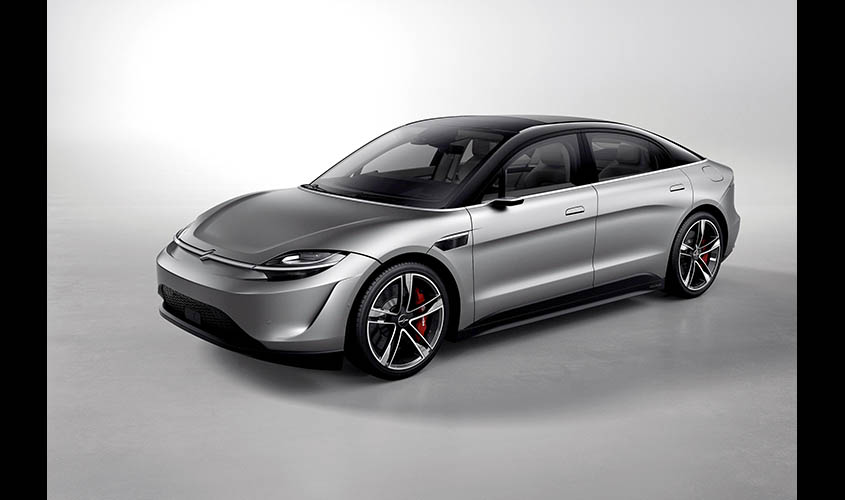The annual consumer electronics show in Las Vegas, Nevada is the go-to place to find all innovations in the world of technology. In the last few years it has also become a place where global consumer giants showcase their future mobility solutions. As cars become more connected mobility is seeing big innovations some of which were unthinkable just a few years back. Let’s tell you more about some of the mobility highlights from CES 2020 held earlier this week.
Hyundai Smart mobility
Hyundai seems to have global lead when it comes to adopting new technology and mobility tools. The Korean Auto giant came up with three innovative solutions at the show. The first to vitalize future cities is Urban Air Mobility (UAM) which enables runway-free air travel with Personal Air Vehicles (PAV) capable of electric vertical takeoff and landing. Hyundai says UAM will be made affordable and accessible through utilisation of automaker’s know-how in automobiles, aerodynamic design, use of light-weight from carbon composite materials, productive design technology, and reduced operating costs. The show also saw the world premiere of “S-A1”, concept PAV Hyundai has developed jointly with Uber. It is designed to seat five people, including a pilot but later will enable autonomous operation too. The second mobility solution from the company is a Purpose Built Vehicle that can accommodate a wide spectrum of future lifestyles. Upon personalisation, PBVs can function as a restaurant, coffee shop, and hotel, or even a clinic and pharmacy, in addition to being an urban shuttle. And there’s more, the third mobility solution presented is the Hub, a community space that connects air-based UAM and ground-based PBV. It has a skyport for the PAV on the top and docking stations on the ground for the PBV to approach and depart from multiple directions. The Hub can be transformed into an infinite number of new spaces depending on how PBVs are connected. At CES, a life-size concept PAV was displayed 2.2 metres above from the show floor to appear airborne. Two full-size PBV units were also on display, one as a residential space and the other as a clinic.

Sony Vision-S
Global tech giant Sony showcased its efforts in the area of mobility at the show. The new initiative is named as “VISION-S” and at the core of it are attributes such as safety, reliability, comfort and entertainment. The first prototype incorporates Sony’s imaging and sensing technologies, as well as on-board software regulated using Sony’s AI, telecommunication and cloud technologies, in order to continuously update and evolve its features. A total of 33 sensors detect and recognise people and objects inside and outside the car, and provide advanced driving support. The sensors provide precise driving assistance, such as cruise control, self-parking and auto-lane change functions, that corresponds to Level 2+ driver assistance. Inside the cabin, sensors will monitor the condition of drivers and passengers. The facial expression and body movement of drivers will be used to gauge their concentration and fatigue levels, sending out alerts as necessary. The cabin temperature will be adjusted according to the condition and feelings of passengers. A long wheelbase brought about by a compact and highly flexible powertrain layout, which is distinctive of pure EVs, and the development of ultrathin battery packs will be some important features. 200 kW each power will be provided by front and rear axles while the car will race from 0-100 kmph in just 4.8 secs. It gets a top speed of 240 km/h and ground clearance of 135 mm.
Bosch Virtual Visor
The traditional vehicle sun visor will soon be a piece of history. German tech giant Bosch came up with a small yet significant innovation at CES 2020. A transparent LCD screen uses AI and face-scanning technology to block out glare without obscuring the driver’s view of the road. Using a camera the system will block only that part of the visor which gets direct sun rays. The rest of the visor would remain transparent and this would only mean improved visibility, therefore more safety.

Aston Martin hybrid camera
Another step to improve driver’s visibility as iconic British car maker Aston Martin announced that its future cars will come with a camera-based rear vision system. At CES, the system was integrated into a DBS Superleggera for demonstration where three cameras provide a comprehensive view of the sides and rear of the vehicle. Side-view cameras are discretely housed in each of the vehicle’s exterior mirrors; their video feeds are combined with that of a roof-mounted camera and displayed together in multiple composite views to the driver on the rear-view mirror-integrated display inside the cabin.

Jeep Hybrids
Who would’ve thought that one day the muscular fuel-guzzling SUVs from Jeep would turn hybrid. Well this week Vegas saw the debut of plug-in hybrid versions of the Wrangler, Compass and Renegade SUVs. A new hybrid branding called “4xe” means that all Jeep models will have a plug-in hybrid option in next two years.

